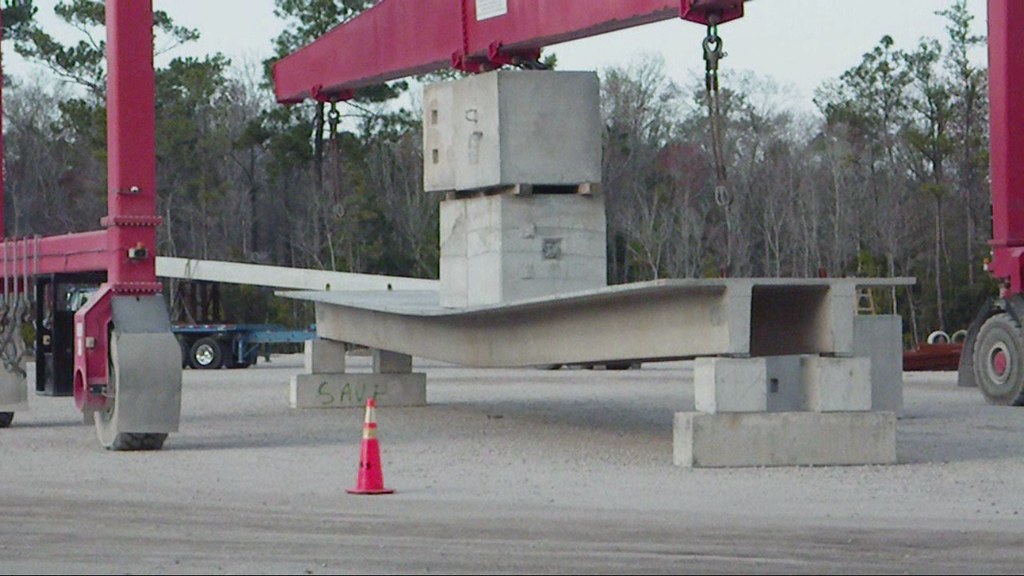It all started in 1886, in San Francisco when Jackson applied for a patent for " Construction of artificial stone and concrete pavements", in which prestress was introduced by tensioning the reinforced rods set in sleeves.
La Grande Arche de la Défense , also ( La Grande Arche de la Fraternité) is a monument and building in the business district of La Défense and in the commune of Puteaux, to the west of Paris, France. It is usually known as the Arche de la Défense or simply as La Grande Arche.The Arche is in the approximate shape of a cube (width: 110m, height: 110m, depth: 110m); it has been suggested that the structure looks like a hypercube (a tesseract) projected onto the three-dimensional world. It has a prestressed concrete frame covered with glass and Carrara marble from Italy and was built by the French civil engineering company Bouygues.
After that Dohring of Germany, Austrian engineer Mandl, M Koenen of Germany further used the concept and developed the subject. Steiner in 1908 recognised the importance of losses in prestressing due to shrinkage of concrete.
In 1928, in the construction of a major bridge of the deep-girder type, in which prestressing wires were placed inside the girder without any bond which was demonstrated by Dischinger.
FREYSSINET demonstrated, in 1928, the advantages of using high-strngth steel and concrete to account for the various losses of prestress due to creep and shrinkage of concrete. He was the major pioneer of prestressed concrete.
 |
| Image source: efreyssinet-association.com |
His most significant early bridge was the three span Pont le Veurdre near Vichy, built in 1911. At the time, the 72.5 metre (238 ft) spans were the longest so far constructed in France although Grafton Bridge a 97.6 metre reinforced concrete bridge had been opened in April 1910 and the Rocky River Bridge in Cleveland Ohio, a 85.34 metre unreinforecd bridge had been opened in October 1910.
The use of pre stressed concrete spread exorbitantly from 1935 onwards and many long-span bridges in Europe and US were constructed using this technique. From the past 70 years, prestressed concrete has been widely used for the constuction of long-span bridges, industrial shell roofs, marine structures, nuclear pressure vessels, water-retaining structures, transmission poles, railway sleepers and a host of other structures.
Some of the Amazing Structures:
 |
| Rio-Niteroi Bridge (Imagesource: Flickr) |
President Costa e Silva Bridge, commonly known as the Rio-Niteroi Bridge, is a box girder bridge crossing Guanabara Bay, in the State of Rio de Janeiro in Brazil. It connects the city of Rio de Janeiro and the municipality of Niterói. It is currently the longest prestressed concrete bridge in the southern hemisphere, and the sixth longest in the world.
 |
| La Grande Arche de la Défense (image source: flickr) |
La Grande Arche de la Défense , also ( La Grande Arche de la Fraternité) is a monument and building in the business district of La Défense and in the commune of Puteaux, to the west of Paris, France. It is usually known as the Arche de la Défense or simply as La Grande Arche.The Arche is in the approximate shape of a cube (width: 110m, height: 110m, depth: 110m); it has been suggested that the structure looks like a hypercube (a tesseract) projected onto the three-dimensional world. It has a prestressed concrete frame covered with glass and Carrara marble from Italy and was built by the French civil engineering company Bouygues.
 |
| San Diego–Coronado Bridge (image source: flickr) |
The San Diego–Coronado Bridge, locally referred to as the Coronado Bridge, is a "prestressed concrete/steel" girder bridge, crossing over San Diego Bay in the United States, linking San Diego with Coronado, California. Construction on the San Diego–Coronado Bay Bridge started in February 1967. It required 20,000 tons of steel (13,000 tons in structural steel and 7,000 in reinforcing steel) and 94,000 cubic yards of concrete. One of the most aesthetic pleasing bridges I've seen, it is the symbol, to anyone familiar with the San Diego/Coronado area, of lovely Coronado Island.
